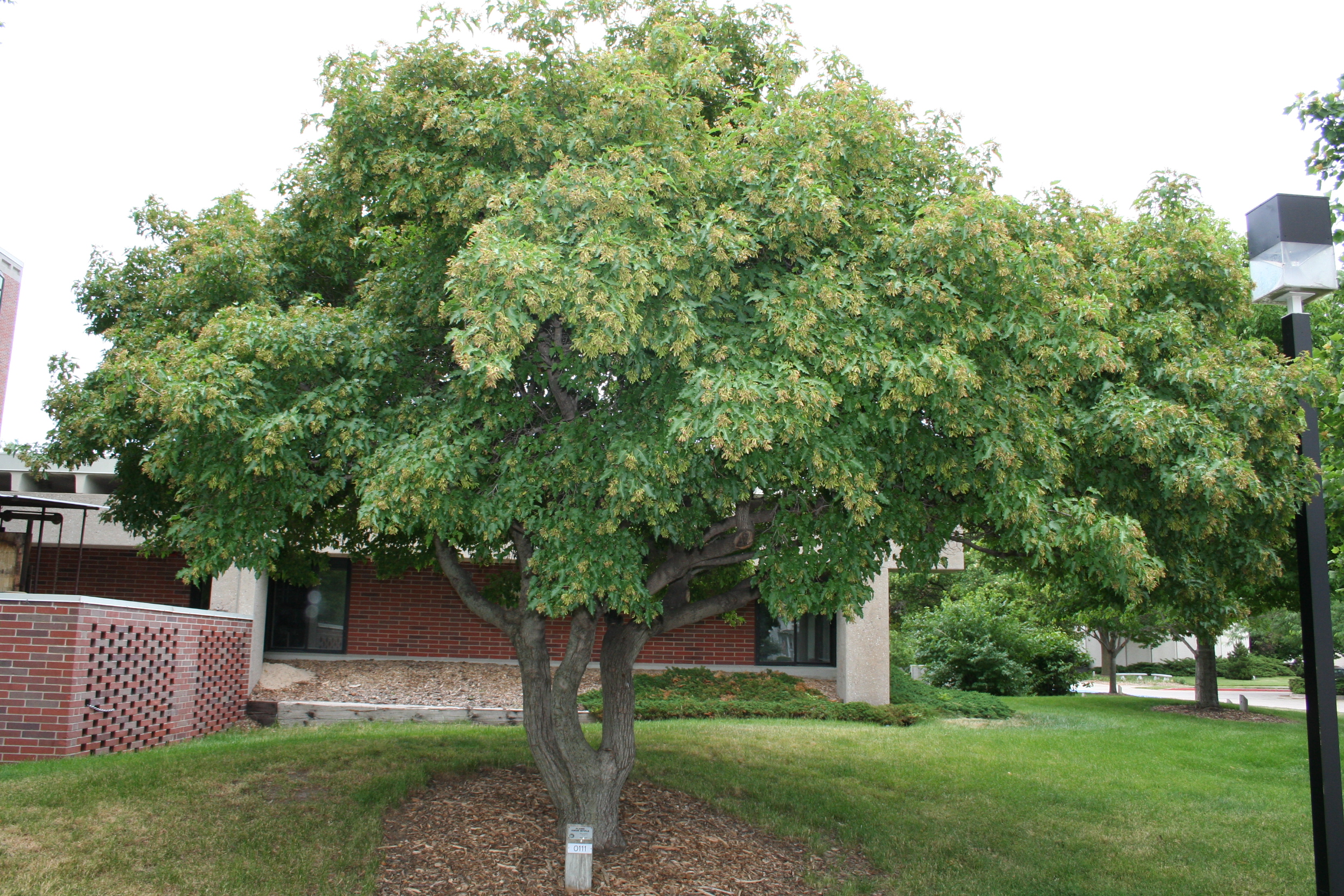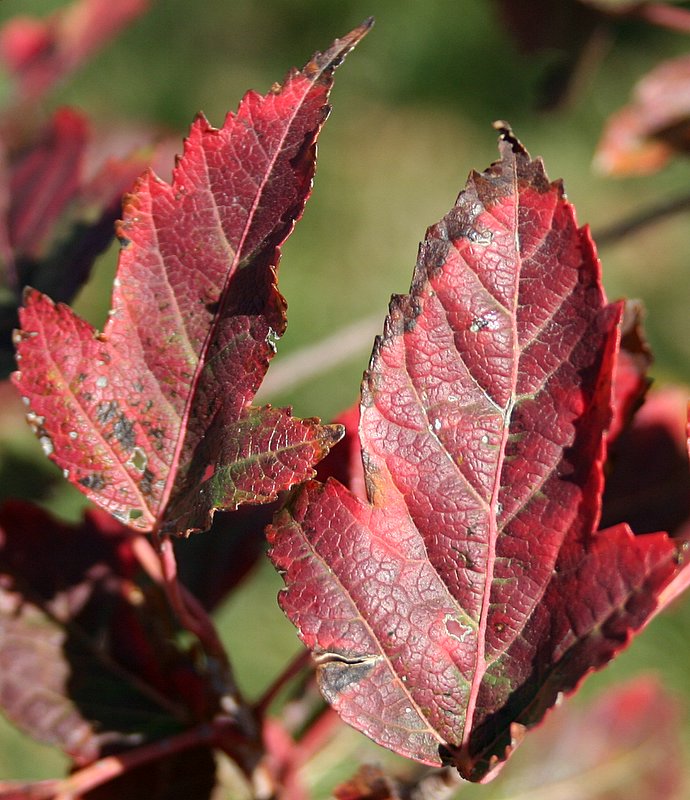Maple, Amur
Acer ginnala, Deciduous
Amur maple is an introduced, deciduous large shrub or small tree. It can be grown as a multi-stemmed clump or trained into a small tree with a single trunk. It can also be sheared into a hedge.

Where To Grow

Size at Maturity
| Tree Height | Tree Spread |
| 20' | 15' |
Tree Characteristics
Amur maple is an introduced, deciduous large shrub or small tree. The leaves are simple, opposite; eight to ten centimeters long, and coarsely toothed. The fragrant, creamy white flowers appear with the new foliage in April and May. The fruit samaras are 0.75 to 1 inch long, held in small panicles and are red to brown in color. The bark is smooth and gray on young branches and grayish brown on older branches.
Additional Considerations
It is more shade tolerant than most maples, giving it the potential for spreading. Combined with its aggressive nature, it can cause real problems for native forests. For these reasons, caution should be used before planting near intact woodlands.
Interesting Facts
The yellow-white flowers appear from May-June after the tree has leafed out. These flowers, unlike those of most maples, are fragrant.
References
- Tips for planting success
- NRCS Plant Guide
- Developed by Justin Evertson, Kyle Martens, and Denise Wally
